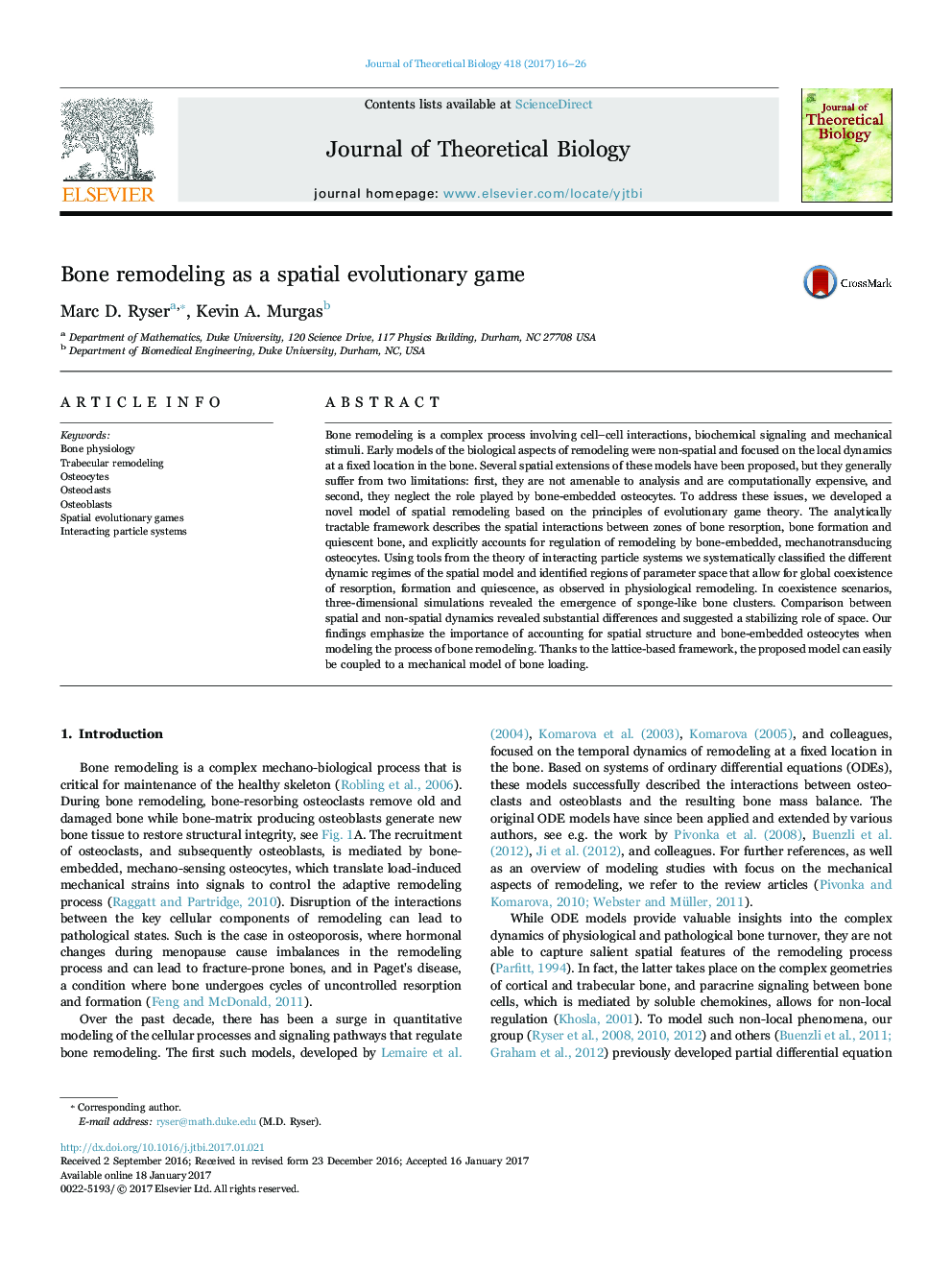| Article ID | Journal | Published Year | Pages | File Type |
|---|---|---|---|---|
| 5760297 | Journal of Theoretical Biology | 2017 | 11 Pages |
Abstract
Bone remodeling is a complex process involving cell-cell interactions, biochemical signaling and mechanical stimuli. Early models of the biological aspects of remodeling were non-spatial and focused on the local dynamics at a fixed location in the bone. Several spatial extensions of these models have been proposed, but they generally suffer from two limitations: first, they are not amenable to analysis and are computationally expensive, and second, they neglect the role played by bone-embedded osteocytes. To address these issues, we developed a novel model of spatial remodeling based on the principles of evolutionary game theory. The analytically tractable framework describes the spatial interactions between zones of bone resorption, bone formation and quiescent bone, and explicitly accounts for regulation of remodeling by bone-embedded, mechanotransducing osteocytes. Using tools from the theory of interacting particle systems we systematically classified the different dynamic regimes of the spatial model and identified regions of parameter space that allow for global coexistence of resorption, formation and quiescence, as observed in physiological remodeling. In coexistence scenarios, three-dimensional simulations revealed the emergence of sponge-like bone clusters. Comparison between spatial and non-spatial dynamics revealed substantial differences and suggested a stabilizing role of space. Our findings emphasize the importance of accounting for spatial structure and bone-embedded osteocytes when modeling the process of bone remodeling. Thanks to the lattice-based framework, the proposed model can easily be coupled to a mechanical model of bone loading.
Related Topics
Life Sciences
Agricultural and Biological Sciences
Agricultural and Biological Sciences (General)
Authors
Marc D. Ryser, Kevin A. Murgas,
